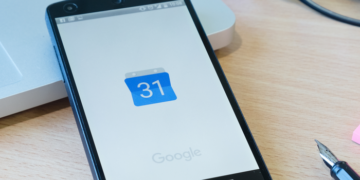
In today’s global business environment, meetings often include participants who speak different languages. To ensure effective communication, adding language interpreters to meetings is essential. Here is a step-by-step guide on how to do so:
1. Assess Your Needs
Before you can add an interpreter, you need to know your requirements:
- Languages: Determine the languages spoken by meeting participants.
- Interpretation Type: Decide if you need simultaneous interpretation (real-time) or consecutive interpretation (interpreter translates after a speaker has finished).
2. Find Qualified Interpreters
Hiring professional interpreters is crucial:
- Search for Professionals: Use professional associations, like the International Association of Conference Interpreters, to find certified interpreters.
- Check Credentials: Ensure interpreters are qualified and have experience in the relevant industry or subject matter.
3. Choose the Right Technology
Depending on the meeting format (in-person, virtual, or hybrid), you’ll need different setups:
- In-person: Look into portable interpreting equipment like booths, microphones, and headsets.
- Virtual: Choose a video conferencing platform that supports multi-language interpretation, such as Zoom’s interpretation feature.
4. Pre-Meeting Briefing
Coordinate with interpreters before the meeting:
- Materials: Provide interpreters with meeting agendas, presentations, and glossaries to familiarize them with the topic.
- Technical Check: For virtual meetings, ensure interpreters are familiar with the platform and test the technology in advance.
5. Integrate Interpreters into the Meeting
Make the interpreters a seamless part of the meeting:
- Introductions: Introduce interpreters to participants and explain how they will work during the meeting.
- Positioning: In in-person meetings, place interpreters where they can see and hear speakers clearly.
6. Consider Meeting Etiquette
Inform participants of the best practices for working with interpreters:
- Speaking Pace: Encourage speakers to talk at a reasonable pace to aid accurate interpretation.
- Clarity: Remind speakers to articulate clearly and avoid jargon unless previously discussed with the interpreter.
7. Monitor and Adjust
Be prepared to make adjustments:
- Feedback Loop: Establish a way for interpreters to provide feedback or signal if they need speakers to slow down or clarify points.
- Breaks: Schedule regular breaks, especially for simultaneous interpreters, to maintain quality and prevent fatigue.
8. Post-Meeting Follow-Up
After the meeting, gather feedback:
- Debrief: Talk with interpreters to discuss what went well and what could be improved.
- Feedback from Participants: Ask non-native speakers about their experience to ensure the interpretation met their needs.
By carefully planning and considering these steps, you can add language interpreters to your meetings effectively, ensuring clear communication and a more inclusive environment for all participants.
How to Start Language Interpretation at Meetings
Starting language interpretation at meetings can seem like a daunting task, but with careful planning and execution, it can be integrated smoothly to facilitate effective communication across language barriers. Here’s how to initiate the process:
1. Determine the Need for Interpretation
Assess Participants: Identify the languages spoken by meeting attendees to establish whether interpretation services are required.
Scope of the Meeting: Consider the meeting’s size, duration, and complexity. High-stakes or lengthy meetings with non-native speakers often necessitate interpretation.
2. Decide on the Type of Interpretation
Simultaneous Interpretation: This is done in real-time and is suitable for conferences and large meetings where two or more languages are required.
Consecutive Interpretation: The interpreter speaks after the original speaker has paused, which is more suitable for smaller settings or when only one other language is involved.
3. Hire Professional Interpreters
Research and Hire: Look for interpreters with expertise in the relevant language pairs and familiarity with the meeting’s subject matter.
Check References: Ensure the interpreters have good references and reviews from previous clients.
4. Prepare the Interpreters
Brief Them: Provide detailed information about the meeting’s agenda, topics, and terminology to the interpreters in advance.
Provide Materials: Give them access to speeches, presentations, and any other relevant documents beforehand.
5. Set Up the Necessary Equipment
For Simultaneous Interpretation: Arrange for soundproof booths, headsets, and microphones.
For Consecutive Interpretation: Ensure the interpreter is seated in a location where they can clearly hear all speakers.
For Virtual Meetings: Select a platform that offers robust features for interpretation, like separate audio channels.
6. Conduct a Pre-Meeting Walkthrough
Test Equipment: Make sure all technical equipment is working correctly, and interpreters are comfortable with its usage.
Rehearse: If possible, have a brief rehearsal with the interpreters to go through the meeting flow.
7. Educate Meeting Participants
Inform: Teach participants how to use the interpretation equipment and explain the process of interpretation being used.
Communicate Guidelines: Encourage clear, concise speaking and advise against the use of slang or idioms that may be difficult to interpret.
8. Begin the Meeting with Clear Instructions
Announce: At the start of the meeting, explain how participants can access interpretation services.
Instructions: Give clear instructions on how to signal if there are issues with the interpretation or equipment.
9. Monitor the Process
Observe: Pay attention to the interpreters and participants to ensure the process is running smoothly.
Be Responsive: Address any technical issues or misunderstandings quickly to minimize disruptions.
10. Gather Feedback for Improvement
Post-Meeting Evaluation: After the meeting, seek feedback from both the interpreters and the participants on the effectiveness of the interpretation.
Continuous Improvement: Use the feedback to make any necessary adjustments for future meetings.
Starting language interpretation at meetings may initially require a bit of extra effort, but by following these steps, you can ensure a more inclusive and productive environment that values clear communication and cultural diversity.
- SEO Powered Content & PR Distribution. Get Amplified Today.
- PlatoData.Network Vertical Generative Ai. Empower Yourself. Access Here.
- PlatoAiStream. Web3 Intelligence. Knowledge Amplified. Access Here.
- PlatoESG. Carbon, CleanTech, Energy, Environment, Solar, Waste Management. Access Here.
- PlatoHealth. Biotech and Clinical Trials Intelligence. Access Here.
- Source: https://www.techpluto.com/how-do-i-get-accurate-translations-on-zoom/
- :has
- :is
- :where
- $UP
- a
- About
- access
- accurate
- across
- add
- adding
- address
- adjustments
- advance
- advise
- After
- against
- agenda
- Aid
- All
- an
- and
- any
- ARE
- articulate
- AS
- ask
- assess
- Association
- associations
- At
- attendees
- attention
- audio
- avoid
- barriers
- BE
- before
- begin
- being
- BEST
- best practices
- Bit
- booths
- both
- breaks
- business
- but
- by
- CAN
- careful
- carefully
- Certified
- channels
- check
- Choose
- clear
- clearly
- clients
- comfortable
- Communication
- complexity
- concise
- Conduct
- Conference
- conferences
- conferencing
- consecutive
- Consider
- considering
- correctly
- could
- Credentials
- crucial
- cultural
- decide
- detailed
- Determine
- different
- difficult
- discuss
- discussed
- disruptions
- Diversity
- do
- documents
- done
- down
- duration
- during
- educate
- Effective
- effectively
- effectiveness
- effort
- encourage
- ensure
- ensuring
- Environment
- equipment
- especially
- essential
- establish
- evaluation
- execution
- experience
- expertise
- Explain
- extra
- facilitate
- familiar
- Familiarity
- familiarize
- fatigue
- Feature
- Features
- feedback
- Find
- flow
- following
- For
- format
- from
- future
- gather
- get
- Give
- Global
- global business
- Go
- good
- guide
- guidelines
- Have
- headsets
- hear
- here
- hire
- How
- How To
- HTTPS
- Hybrid
- i
- identify
- if
- improved
- improvement
- in
- include
- Inclusive
- industry
- information
- initially
- initiate
- instructions
- integrate
- integrated
- International
- interpretation
- into
- introduce
- involved
- issues
- IT
- ITS
- jargon
- jpg
- Know
- language
- Languages
- large
- like
- location
- Look
- maintain
- make
- materials
- Matter
- May..
- meeting
- meetings
- met
- microphones
- minimize
- Monitor
- more
- necessary
- Need
- needs
- non-native
- of
- Offers
- often
- on
- ONE
- only
- or
- original
- Other
- Pace
- pairs
- part
- participants
- paused
- Pay
- Place
- planning
- platform
- plato
- Plato Data Intelligence
- PlatoData
- points
- portable
- possible
- practices
- Prepare
- prepared
- Presentations
- prevent
- previous
- previously
- process
- productive
- professional
- professionals
- provide
- qualified
- quality
- quickly
- real-time
- reasonable
- references
- regular
- rehearsal
- relevant
- require
- required
- Requirements
- responsive
- Reviews
- right
- robust
- running
- schedule
- seamless
- see
- Seek
- seem
- separate
- Services
- set
- settings
- Signal
- simultaneous
- Size
- slow
- smaller
- smoothly
- So
- speak
- Speaker
- speakers
- speaking
- Speaks
- speeches
- spoken
- start
- Steps
- subject
- such
- suitable
- Supports
- sure
- Talk
- Task
- Technical
- Technology
- terminology
- test
- that
- The
- their
- Them
- There.
- These
- they
- this
- Through
- to
- today’s
- topic
- Topics
- Translations
- two
- type
- Usage
- use
- used
- Values
- Video
- video conferencing
- Virtual
- Virtual Meetings
- Way..
- WELL
- went
- What
- when
- whether
- which
- WHO
- will
- with
- Work
- working
- you
- Your
- zephyrnet
- zoom












